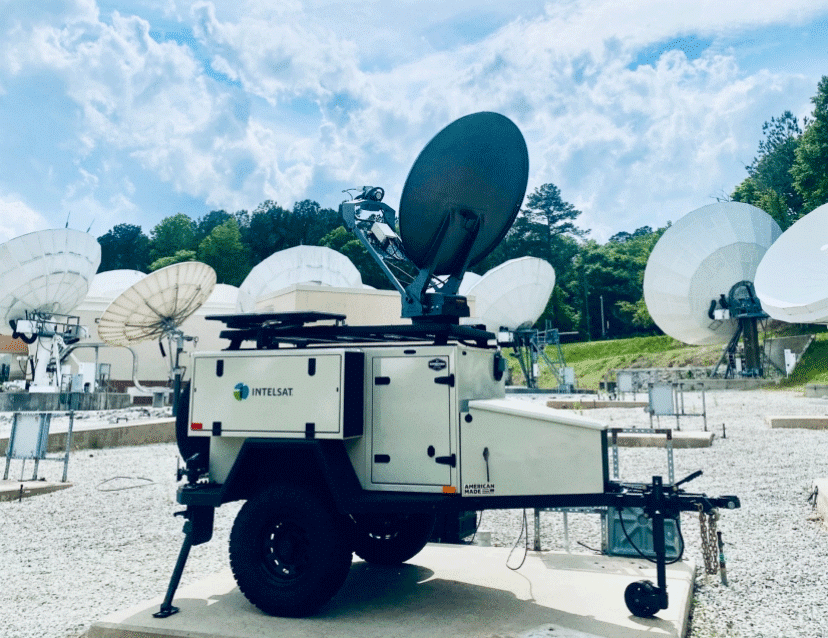Why Commercial SATCOM Integration Funding is Critical to the U.S. Air Force
For more than a decade now, Intelsat General has taken a leadership role in convincing the U.S. government to make better use of commercial satellite communications (COMSATCOM) in a wide range of military and non-military operations around the world. We have worked closely with both Congress and the Department of Defense (DoD) to make it easier for military units to use COMSATCOM to supplement government-owned satellite capacity when necessary.
Congress passed its annual Defense Authorizations (NDAA) and Appropriations Packages for FY20, which both included $5M in funding for COMSATCOM Integration, which the Air Force did not include in their budget request.
Though there is broad awareness that space is now a contested military domain, the Department has yet to recognize COMSATCOM capabilities as an essential tool for achieving space domain resiliency. The $5M add in FY20 builds on years of congressional frustration with the Air Force’s inaction on COMSATCOM integration.
From FY14 to FY19, lawmakers also:
- Provided funding for relevant investments such as the COMSATCOM Pathfinder and Pilot initiatives;
- Modified applicable acquisition authorities, such as moving acquisition authority for COMSATCOM leases from the Defense Systems Information Agency (DISA) to the Commander of Air Force Space Command (AFSPC);
- Provided more flexibility for COMSATCOM appropriations.
In FY19, defense appropriators provided explicit guidance to develop an integrated architecture and acquisition strategy that should include “government and commercial space systems” and “be based on flexible operations, open standards, and commonality that has communications path diversity.” (Quotes from HR 6157, Department of Defense Appropriations Act, 2019.)
Perhaps even more significant, Congress for the first time created a dedicated program element (PE) in the FY19 DoD budget for COMSATCOM integration into future DoD satellite networks. In response to the new legislative guidance, the Air Force created the new PE and added funds for FY19. However, the Air Force did not request any funding for this PE in the FY20 President’s Budget submission. Congressional appropriators provided funds for this PE in their final FY20 mark because a lack of funding would jeopardize COMSATCOM integration efforts and deal a totally unnecessary blow to space readiness.
The Air Force needs these funds to implement its SATCOM Enterprise Vision effectively. This enterprise plan is purportedly complete and awaiting final signature., Early indications are it will consolidate all SATCOM governance in one place, and the plan considers the use of managed services for flexible delivery of capabilities to the warfighter. A services model, in which the military only pays for what they use or offers a monthly subscription, provides continuously refreshed technology and global responsiveness in an affordable fashion.
But to effect such change, roles and investment strategies need to be clarified. There is a lack of definition around the responsibilities of other joint force components, such as the Space and Missile Systems Center (SMC), Air Force Space Command Commercial SATCOM Office (AF/CSCO), and others. This will only be compounded as the DoD stands up the United States Space Force as a sixth branch of the armed services, which was authorized in this year’s NDAA. Change of course takes time, especially for an organization as vast and complicated as the DoD. But we cannot let organizational issues delay progress towards a stronger and more flexible space posture.
The COMSATCOM procurement model is changing, thanks to congressional and Executive branch leadership. U.S. civil space is leading the charge as well, with NASA embarking on a new effort, the Communications Services Program (CSP), to leverage COMSATCOM services for its future communications needs. Appropriators fully funded CSP in this year’s Commerce, Justice, Science and Related Agencies appropriations bill. The DoD must also leverage the commercial satellite industry in a more timely and efficient manner.
We’re on the right path to continued space supremacy. Congress, the DoD and commercial industry need to work together to ensure we stay on it.






















